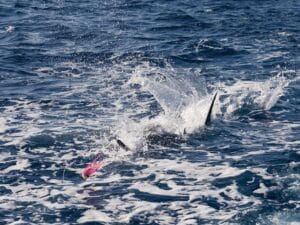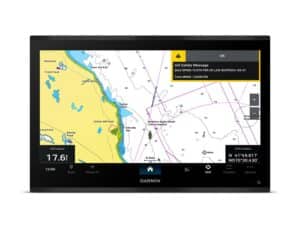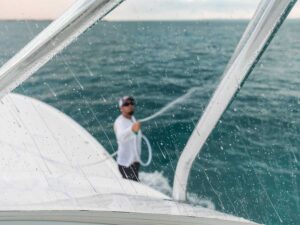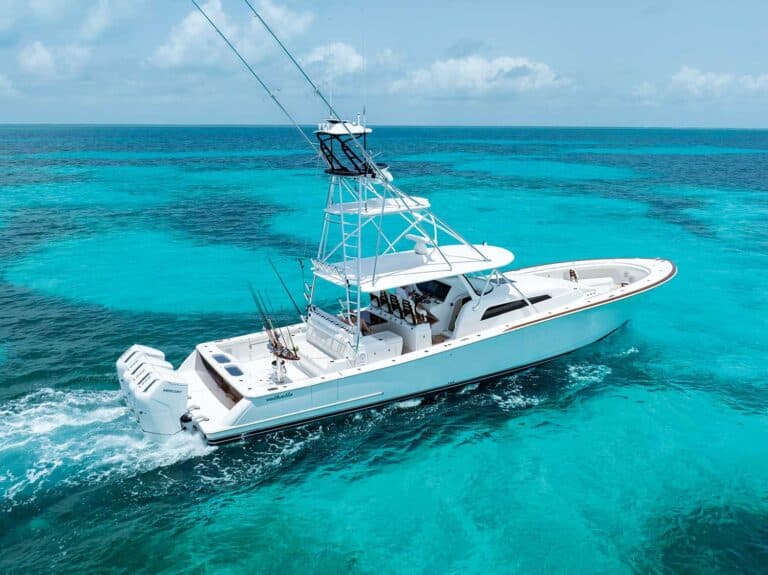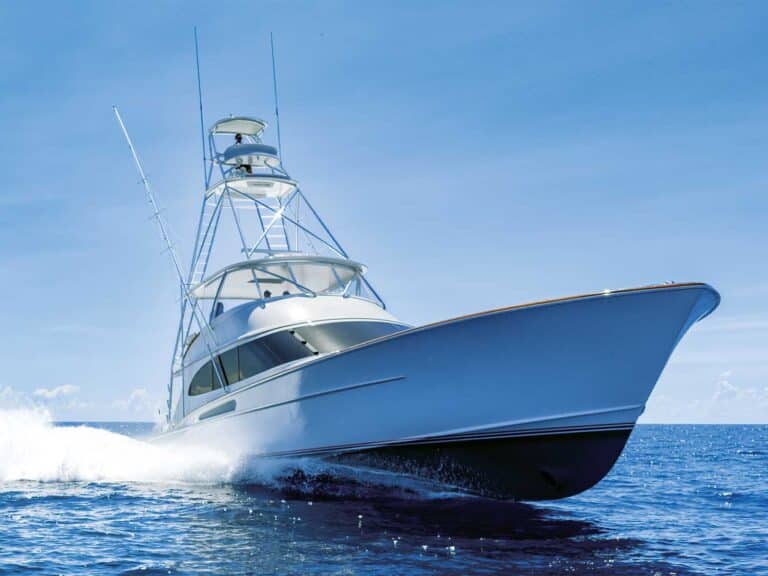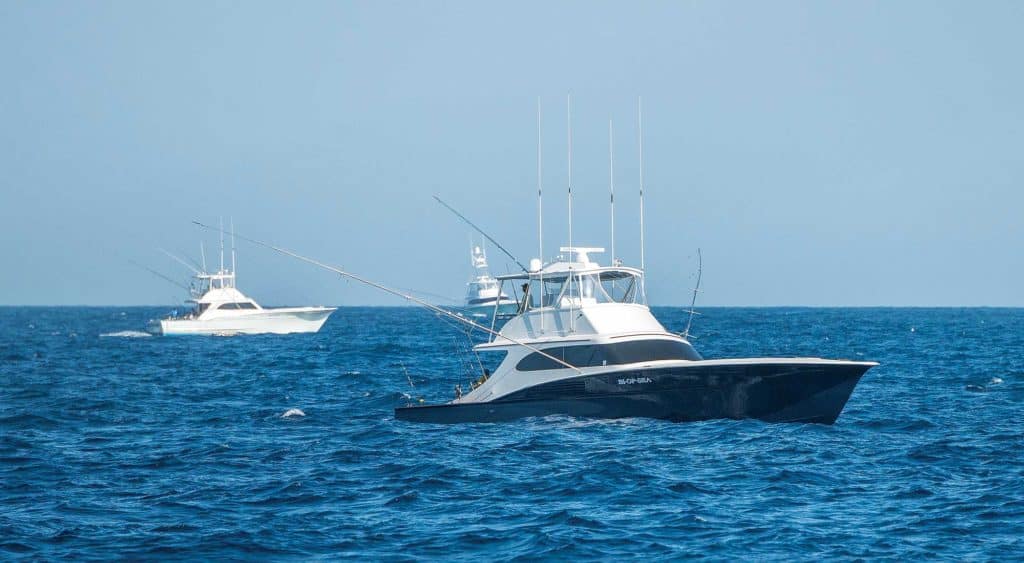
You might have read the story “Tournament Control” in Marlin and breezed over a quick remark by Capt. Chris Garner of Southern Pride. Hidden within a powerful argument for a speedy boat while tournament fishing was a sly tactic practiced nowadays by only a few winning fishermen.
Garner was speaking about the need to pick up and run great distances without losing too much angling time. What was easy to overlook is this: “The speed certainly helps if you have a radio-signal locater; you can find out where the bite is starting, then pick up and head in that direction,” he said.
You can do that, absolutely.
“In release tournaments, every catch has to be radioed in when it occurs,” says Dan Jacobs, the tournament director of several international tournaments, as he repeats the ubiquitous truth of well-run tournaments: “Instant radio reports help keep the tournament committee apprised of angler success and also help verify that success if there is a question of release numbers. In our tournaments, we issue the team five consecutively numbered catch control cards and tournament control chooses the number the team shows on each release video.”
Some tournaments rely on affidavits and, occasionally, lie-detector tests are required.
In most tournaments, contestants and crews agree to submit to polygraph testing after the tournament. It’s not usually needed, but it happens enough to warrant a forewarning. One thing the radio record of catches establishes is a timeline, which officials can use to authenticate the tally after the tournament.
Yet, if you’re on a dead spot, and somebody keeps popping up on your VHF with another release, wouldn’t you like to get in on their hot bite?
Leaking Your Location
There are several ways you give up your location on the water.
Your vessel might be equipped with an automatic information system. These devices are mandatory on commercial vessels and some larger recreational boats. For the most part, your battlewagon falls well below the Coast Guard’s threshold for AIS requirement, but you might have it for safety.
AIS devices operate on VHF bandwidth, and they poll your navigation system for location, heading and speed over ground. In addition, your vessel’s name, details and port of call are programmed in, and this information is transmitted to all other vessels with AIS equipment. If your skipper leaves AIS running during tournament hours, your location will be known to anyone in radio range. So if competitors hear you radio in your catch and they have you on their AIS, expect a visitor.
Marine VHF radios have been required to be digital select calling-equipped for nearly 10 years now. DSC systems don’t necessarily need to be activated, but new radios do annoyingly request a specific number called a marine mobile service identity, which you get from the Federal Communications Commission. Once the free identity number is acquired and programmed into your VHF radio, every radio call will be accompanied by a digital tag with your GPS location. For safety we advise against it, but some captains have even disconnected their GPS from their radio before calling in a catch to prevent others from joining in on a hot bite.
But even that doesn’t guarantee privacy, as Garner implied. Some devices can determine the direction from which a VHF call is made. The equipment is commercially available, and it’s not cheap — unless you check on eBay.
Rhotheta makes a package for around $5,000 that can determine a general compass bearing to a radio transmission. Couple that with an on-screen radar target for distance and a claim-jumper can quickly navigate to your spot. Rhotheta’s device requires a specialized antenna. It looks like a flying saucer with four vertical elements. A receiver processes the signal as it strikes multiple elements, then calculates the general bearing by measuring the subtle differences in time each antenna element receives the signal.
The device is used most often by search-and-rescue operators to find lost mariners or aviators. Similar technology is used for wildlife tracking. The receiver and antennas are compact enough for the average battlewagon, and some skippers are already using it.
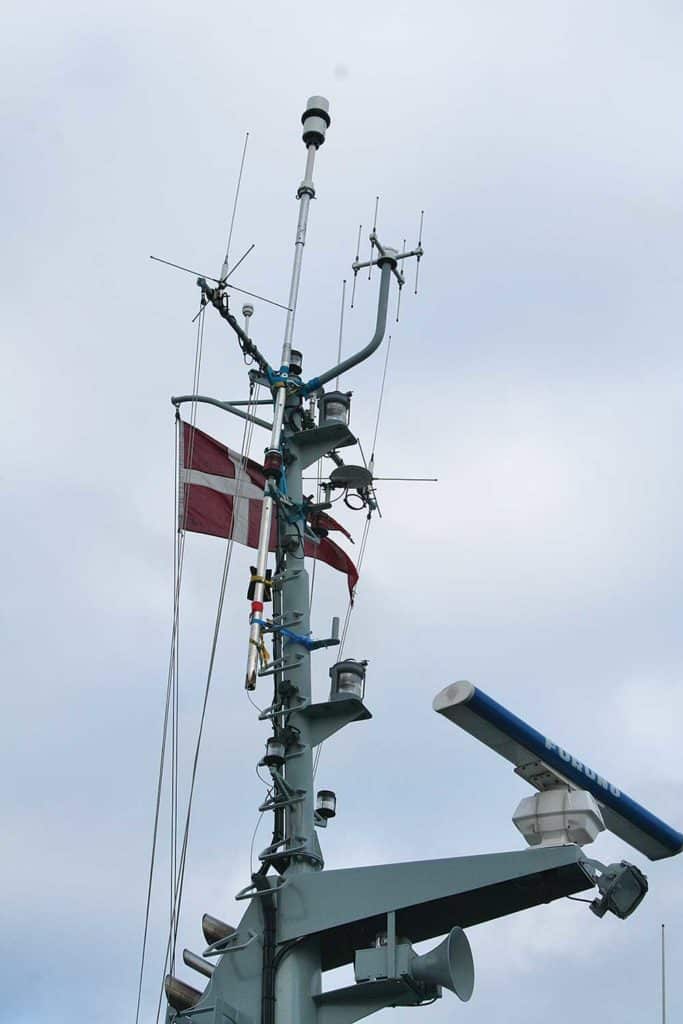
Marlin Senior Editor Sam White is familiar with them from his tournament fishing activities.
“Several boats use them,” White says. “At the helm is a display that represents your vessel in a circle of LEDs. When a call comes in, the LEDs on the instrument between your vessel and the call source light up.” With a general bearing to the caller corroborated with a radar fix, you can be on your way to a better bite.
But is it fair? Well, we’ll argue it isn’t unfair as long as you don’t crowd the first boats on the school of fish or baitball and interfere with their fishing. And you are still challenged with first finding the boat, or boats, calling in the melee of releases before you can run to them. But there is also considerable risk in picking up and running 20 or 30 miles — you lose a lot of fishing time, especially in a tournament situation. However, a drastic move can completely turn around a tournament day for a team that might have had a stint of slow action. In a tournament, when every release matters, the hardest part is finding the hot bite. When this technology is used correctly, it can lead you right to it and give you an opportunity to get in on the action — no matter if the other boats got a faster start.
So why don’t tournament directors use other means of communication?
Partly because analog VHF communications are still the most common, and relay stations are preplanned by promoters between anglers and headquarters.
Most skippers have just a vague knowledge of DSC, and fewer employ its key advantage over analog VHF radio transmissions. With DSC, calls can be made directly, using the receiver’s MMSI number like a phone number and only the designated recipient can hear it.
And then, of course, there are satellite phones — and not many skippers leave home without one of those.
So why aren’t catches reported using more private means available? Most tournament boats have neutral observers, but some skippers still like to know what’s being called in so they can stay apprised of catches when they occur — simply to keep everything … friendly.

